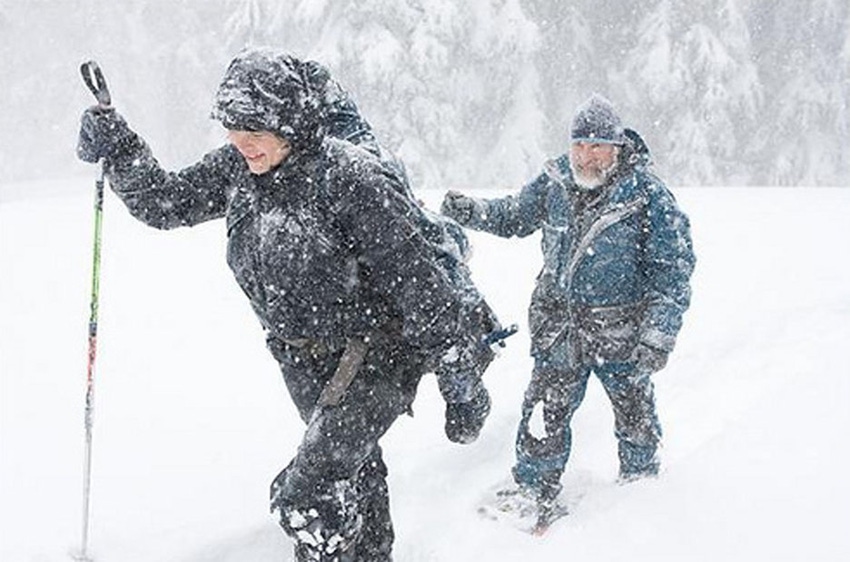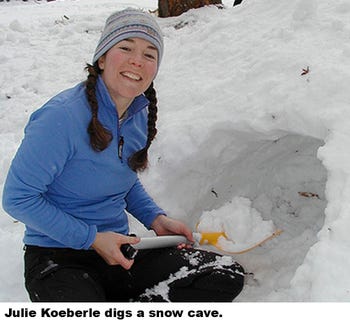January 23, 2013

Julie Koeberle’s job carries her over mountains by helicopter and horse, snowshoes and skis. She has encountered grizzly bears, avalanches and wolves and visited ridges that few people have seen.
Koeberle is a hydrologist and snow surveyor for USDA’s Natural Resources Conservation Service (NRCS) and works on the agency’s snow survey team—a group of specially trained scientists who maintain snow gauges that are important to farmers, business owners and many other people in the West.
After earning her master’s in snow hydrology from Colorado State University, Koeberle worked as a meteorologist at the National Weather Service. Though she enjoyed the complexity and challenge of forecasting weather, her passion was snow. So in May 2006, she accepted a position with NRCS as hydrologist and snow surveyor.
(See snow surveying photo gallery)
 Koeberle is one of 50 NRCS snow surveyors who maintain an intricate web of snow survey gauges in more than 850 remote locations in Alaska, Washington, Oregon, California, Montana, Wyoming, Idaho, Nevada, Utah, Colorado, New Mexico and Arizona. These gauges form a network of automated snow telemetry equipment, or SNOTEL, and they allow NRCS to predict the amount of spring and summer snowmelt in twelve Western states—where 50 to 80 percent of all the water used comes from snowmelt.
Koeberle is one of 50 NRCS snow surveyors who maintain an intricate web of snow survey gauges in more than 850 remote locations in Alaska, Washington, Oregon, California, Montana, Wyoming, Idaho, Nevada, Utah, Colorado, New Mexico and Arizona. These gauges form a network of automated snow telemetry equipment, or SNOTEL, and they allow NRCS to predict the amount of spring and summer snowmelt in twelve Western states—where 50 to 80 percent of all the water used comes from snowmelt.
Even though SNOTEL sites are fully automated, they sometimes require attention and repair. And whether or not there are problems, snow surveyors check each site at least once a year to perform routine maintenance. Many SNOTEL sites are unreachable by road during winter, meaning Koeberle and the other NRCS snow surveyors have to get creative on how to reach them. Occasionally, the gauges are damaged by weather or wildlife and take a few days to fix.
Sometimes horses are necessary to check the sites, including those in Yellowstone National Park. In 2007, Koeberle and her colleagues rode horses for five days to reach a gauge.
Koeberle, an outdoor sports enthusiast, especially enjoys those adventurous assignments. But she has to stay in tip-top shape. Snow surveyors must pass an annual physical exam, and every three years, they complete a week-long survival course. One of their lessons is building a snow cave, which helps snow surveyors, like Koeberle, brave wintry nights on mountaintops.
Visits to gauges occur mostly in the spring and summer, and the colder months are spent in the office, where the snow surveyors analyze and interpret data published in monthly reports.
Koeberle says that she has found her dream job. She loves every moment of it—something about the combination of travel, adventure and physical challenge is irresistible. Plus, she and her teammates are tracking and logging key scientific information that benefits communities across the region.
Find out more about NRCS’s snow survey team and Climate and Water Center.
You May Also Like




